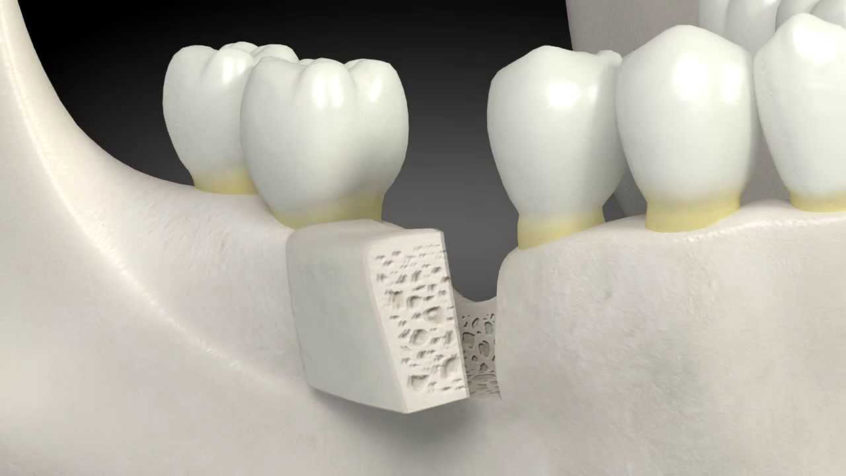Of all the different kinds of dental procedures, bone grafting is one that’s come into the spotlight over the past few years, especially in regards to the dental industry. Bone grafts have proven to be an effective treatment for restoring bones after tooth loss, gum disease or trauma.
Studies have shown that in the first three years after tooth extraction or injury, bone volume decreases by between 40 and 60 percent. After the first three years, bone continues to diminish annually, with between two and five percent bone depletion expected over the course of 12 months. The problem with bones that begin to deplete is that they can lead to issues with chewing and speaking, as well as causing severe soft-tissue pain for the patient. The other problem is that due to bone depletion, the patient may not be able to have dentures or prosthetic replacements fitted. However, with bone grafting treatment, these problems can be avoided.
At Greater Baltimore Prosthodontics, patients who have bone depletion can be offered grafting. The specialists at GBP can build bone vertically, horizontally, or both. The type of bone depends on what the patient’s mouth requires. Procedures are completed using bone or bone-like materials. These synthetic bone materials are forms of processed bone that can work just as well as the patient’s bone.
Thanks to a study by the Queen Mary University of London, there is a new type of bone graft on the horizon. An innovative form of synthetic bone has been developed that allows the body to regenerate its bone tissue.
This new type of graft – known as Inductigraft – has been shown to be able to help guide the growth of new bone tissue in just a few weeks. A process that tends to take months when another form of bone material is used. It has been tried and tested against the most commonly used form of bone graft, producing promising results.
The scientists in charge of this new kind of bone material wanted to create something that was cleverer than the bone itself. The structure of the graft was manipulated so that it was as similar to a natural bone as possible. Currently, it’s preferable to use the patient’s bone material for grafts. However, the development of Inductigraft is about to change that, marking the beginning of a new era in bone grafting treatment.
This incredible breakthrough in bone grafting technology has built on previous research and studies. Initially, researchers used silicate and hydroxyapatite to create a new bone material. This method was a useful experiment as it allowed scientists to come to the understanding that the pore structure needed to be changed.
Currently, research is underway to explore Inductigraft in more detail, including looking at the mechanism that allows it to guide bone structure. Hopefully, there will soon be a new and improved method of bone grafting on the horizon.

